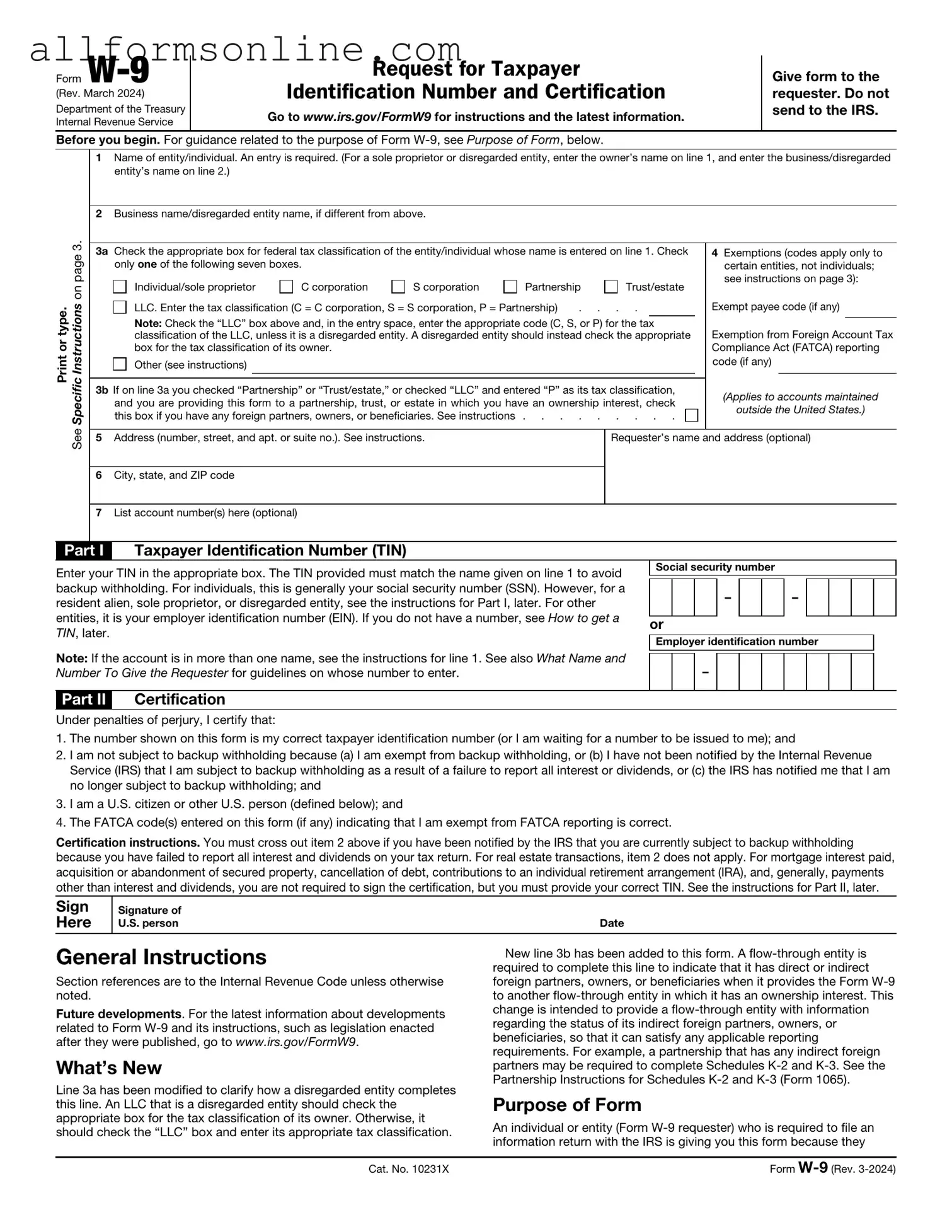What is the purpose of the IRS W-9 form?
The IRS W-9 form is used by individuals and businesses to provide their taxpayer identification information to another party. This form is typically requested by a company or individual who needs to report payments made to you to the IRS. By completing the W-9, you help ensure that the correct information is reported, which can prevent issues with your tax filings.
Who needs to fill out a W-9 form?
Generally, anyone who is a U.S. citizen or resident alien and receives income that needs to be reported to the IRS should complete a W-9. This includes freelancers, independent contractors, and vendors. If you are receiving payments for services, royalties, or other income types, the payer may request that you fill out this form to keep their records accurate.
What information is required on the W-9 form?
The W-9 form asks for basic information such as your name, business name (if applicable), address, and taxpayer identification number (TIN). For individuals, this is typically your Social Security number (SSN). For businesses, it may be your Employer Identification Number (EIN). You will also need to certify that the information provided is accurate and that you are not subject to backup withholding.
How is the W-9 form submitted?
After completing the W-9 form, you do not submit it directly to the IRS. Instead, you provide it to the person or business that requested it. They will use the information to prepare their own tax documents, such as Form 1099, which they will file with the IRS. Make sure to keep a copy for your own records as well.
What happens if I don’t fill out a W-9 form when requested?
If you do not complete and return a W-9 form when requested, the payer may be required to withhold a portion of your payments for tax purposes. This is known as backup withholding. The current backup withholding rate is 24%. To avoid this, it’s best to provide the requested information as soon as possible.
Can I refuse to provide my information on a W-9 form?
While you can technically refuse to provide your information, doing so may lead to negative consequences. If you do not complete the W-9, the payer may withhold taxes from your payments, as mentioned earlier. Additionally, they may choose not to work with you or may terminate any existing contracts. It’s generally in your best interest to comply with the request if you want to receive payment for your services.
